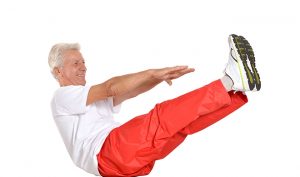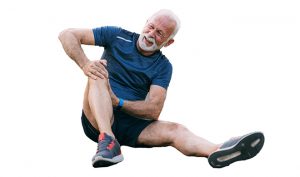Osteoarthritis (OA) is a prevalent chronic joint condition. OA is also known as degenerative arthritis, wear-and-tear arthritis, and degenerative joint disease.
A joint is where two bones meet. The term “cartilage” refers to the protective tissue that protects the ends of bones. With OA, this cartilage deteriorates, causing the bones within the joint to rub against one another. This can lead tossss stiffness, pain, and other symptoms.
OA can occur in any joint. However, the following body areas are the most frequently affected.
- fingers
- hands
- spine, usually at the lower back or neck
- shoulder
- knees
- hips
OA can affect adults of any age, but it mostly affects older people.
Symptoms of osteoarthritis
- Joint pain
- Joint stiffness
- Flexibility loss and limited range of motion
- Inflammation
- Tenderness or discomfort when pressing with your fingers on the affected areas
- Crepitus, crackling, grating, clicking, or popping sounds when you move your joints
- Bone spurs, or additional lumps of bone, which are normally painless
Causes of osteoarthritis
Injuries to the joints lead to OA. Since joint damage that leads to OA can accumulate over time, age is one of the main causes of this damage. As you become older, the repetitive stress on your joints gets worse.
Other factors that contribute to joint damage includes, prior traumas such as cartilage tears, dislocated joints, or ligament tears, joint deformity, obesity and poor posture.

Risk factors
The risk factors of OA include:
- Having family history of OA
- OA is more common in females than males
- Being at least 50 years old (according to the Arthritis Foundation)
- Having experienced menopause
- Having a job that involves climbing, kneeling, heavy lifting, or similar actions
- Having a history of injury
- Being overweight or obese
- Poor posture
- Having another medical condition that affects joint health, such as diabetes or a different type of arthritis
Diagnosis of osteoarthritis
OA is a condition that often progresses slowly. It might be difficult to diagnose until it begins to cause painful or incapacitating symptoms. Early OA is frequently diagnosed after an accident or other incident that results in a fracture that needs an X-ray.
Your doctor might use an MRI, in addition to X-rays to diagnose OA. This imaging examination uses radio waves and a magnetic field to produce images of bone and soft tissue.
Other diagnostic tests include a blood test to rule out other illnesses that cause joint pain, such as Rheumatoid Arthritis. An examination of the synovial (joint) fluid can also reveal if the source of your inflammation is an infection or gout.

Treatment of osteoarthritis
The management of symptoms is the major focus of OA treatment. The severity of symptoms and their location will determine the type of treatment that will benefit you the most.
To reduce your pain, stiffness, and swelling, over-the-counter (OTC) medications, lifestyle changes, and home remedies are typically sufficient.
1. Medications
Many different types of OA medications can provide comfort. They include:
- Oral pain relievers
- Topical pain relievers
- Nonsteroidal anti-inflammatory drugs (NSAIDs)
- Corticosteroids
- Cymbalta (approved to treat major depressive disorder (MDD) generalized anxiety disorder (GAD) pain caused by diabetic neuropathy)
2. Weight management
Having extra weight can strain your joints and cause pain. Losing some weight eases this pressure and lessens pain. Your chance of developing other health issues, such as diabetes and heart disease, can also be reduced by maintaining a healthy weight.
3. Adequate sleep
Resting your muscles help reduce edema and inflammation. Additionally, getting adequate sleep at night can aid in pain management effectively.
4. Heat and cold therapy
You can experiment with using heat or cold therapy to ease stiffness and relieve muscle pain. Apply a hot or cold compress for 15 to 20 minutes to aching joints, several times a day,
5. Exercise
Exercise makes the muscles around your joints stronger, which may ease stiffness. At least once every other day, try to engage in physical activity for 20 to 30 minutes. Pick mild, low-impact exercises like swimming or walking. Yoga and tai chi can both reduce pain and increase joint flexibility.
